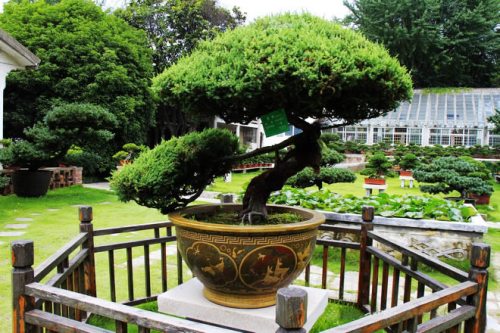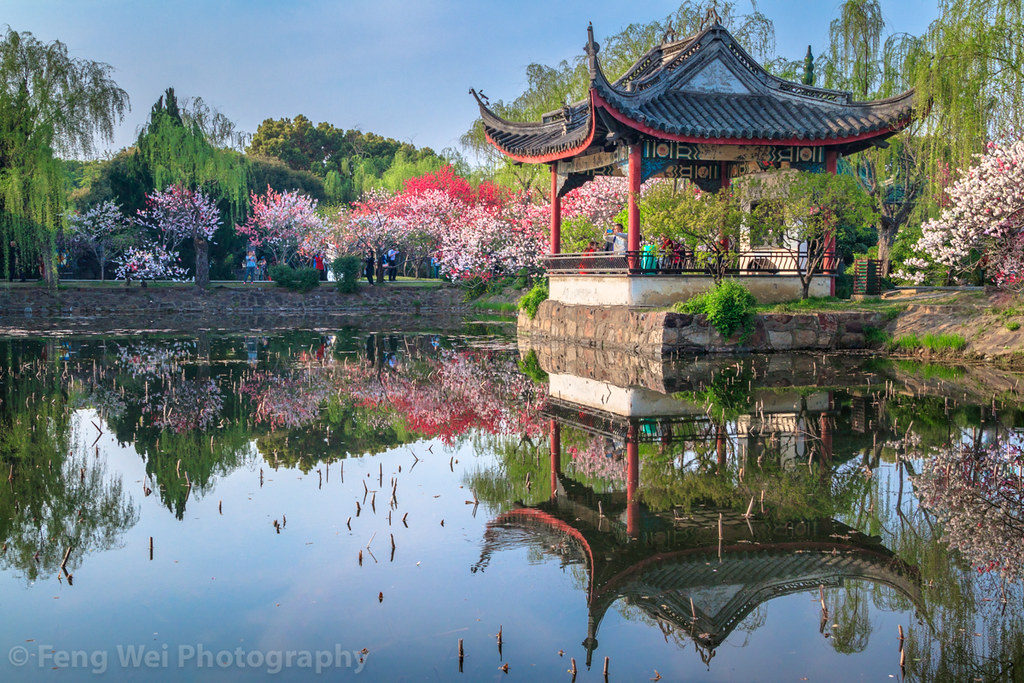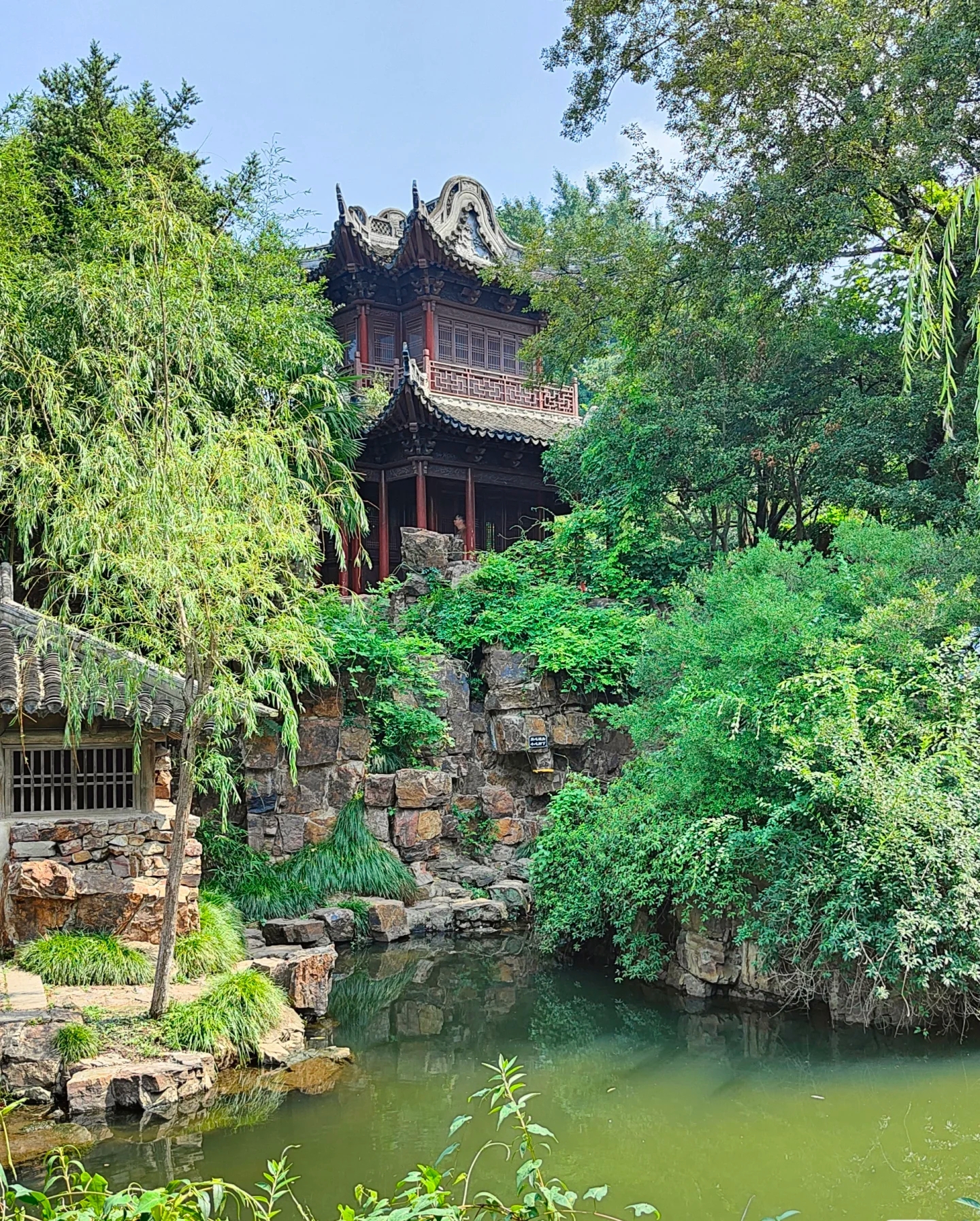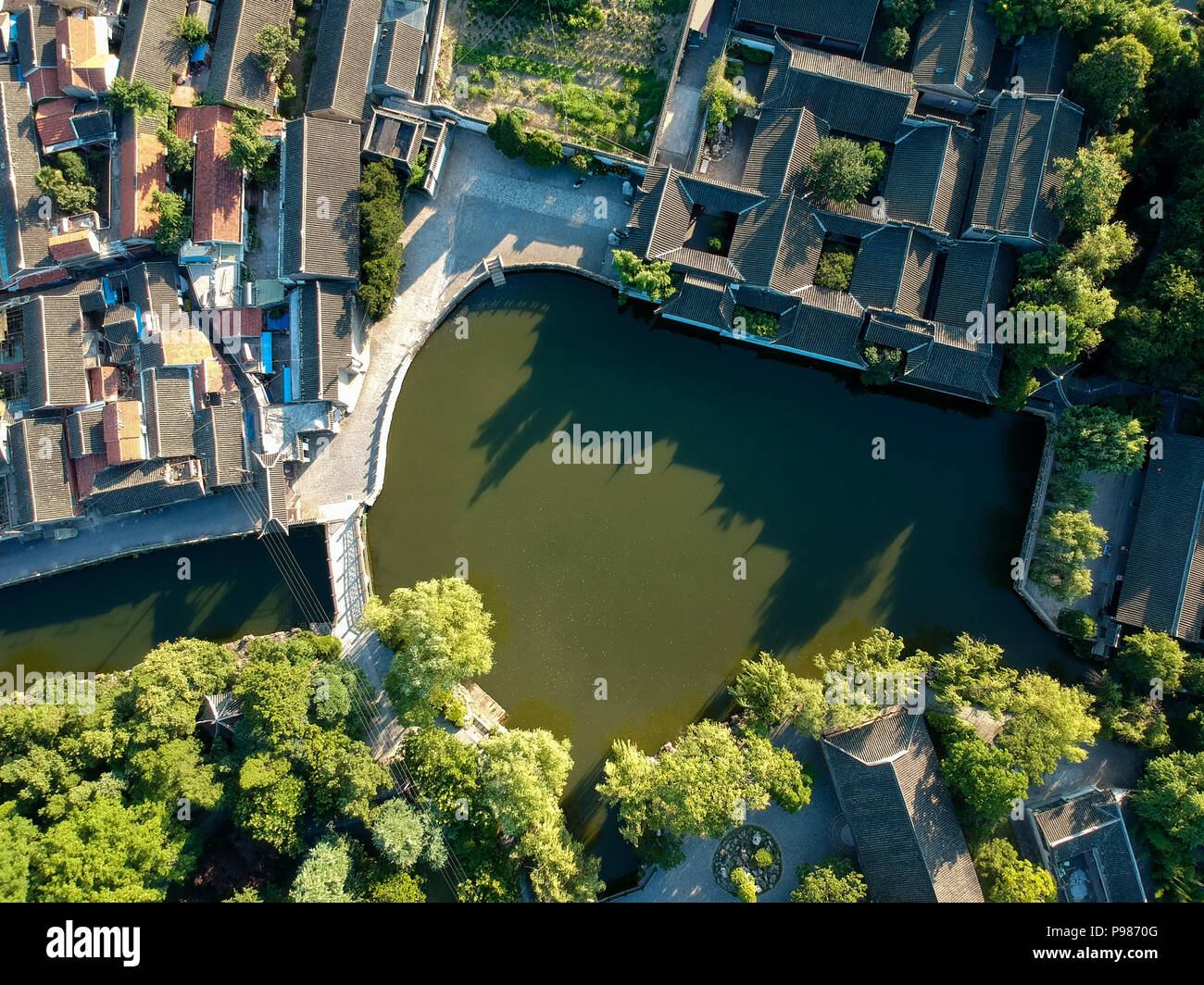Discover the Enchantment of Shuihui Garden: A Comprehensive Travel Guide

An Essential Guide to Visiting Shuihui Garden
Nestled in the charming city of Rugao, Jiangsu Province, Shuihui Garden (水绘园) is a masterpiece that beautifully captures the essence of classical Chinese garden design. This enchanting oasis, often referred to as the “Garden of Water and Painting,” is famed for its seamless integration of water systems with exquisite pavilions and the rich tapestry of literati culture. Imagine strolling through a landscape where flowing water and tranquil ponds create a mesmerizing, ever-changing canvas, reflecting the elegant silhouettes of ancient structures and lush flora.
In this guide, we will embark on a journey through Shuihui Garden’s stunning features, including its historical significance dating back to the Ming Dynasty and the artistic legacy left by the illustrious scholar-artist Mao Xiang. Discover the garden’s must-see spots, such as the ethereal Washing Bowl Pool and the serene Wave Smoke Pavilion, where every corner invites you to pause, reflect, and capture the perfect photograph. We’ll also provide essential practical information, from opening hours and admission details to transportation tips, ensuring your visit is as smooth as the gentle ripples on the garden’s surface. Prepare to immerse yourself in a world of tranquility, beauty, and cultural heritage at Shuihui Garden!
In This Guide
- An Essential Guide to Visiting Shuihui Garden
- The Rich History and Legends of Shuihui Garden
- Main Highlights: What You Absolutely Can’t Miss
- Planning Your Visit: A Practical Guide
- Tickets: Prices, Booking, and Tips
- How to Get There: A Complete Transportation Guide
- Local Cuisine and Accommodation Nearby
- Frequently Asked Questions
- Final Thoughts on Your Trip
The Rich History and Legends of Shuihui Garden
A Journey Through Time: The History of Shuihui Garden
Nestled in the picturesque city of Rugao, Jiangsu Province, Shuihui Garden (水绘园) is a stunning example of classical Chinese garden design, rich in history and legends that reflect the cultural essence of its era. This enchanting space is not only a feast for the eyes but also a canvas of stories that have unfolded over centuries.
Origins in the Ming Dynasty
Shuihui Garden traces its roots back to the Ming Dynasty (1368–1644), specifically between 1573 and 1620. Originally conceived as a private retreat, it was designed with the idea of “water painting,” where water serves as both a medium and a muse. The garden beautifully integrates flowing water with pavilions, bridges, and lush landscapes, creating a harmonious environment that mirrors the elegance of Jiangnan gardens.
Expansion Under Mao Xiang
The garden underwent significant expansion during the early Qing Dynasty, primarily under the vision of Mao Xiang, a celebrated scholar-artist. His enhancements infused Shuihui Garden with a deeper literary and artistic significance, as he incorporated elements that resonated with the ideals of Confucianism and Daoism. The addition of scenic spots like the Washing Bowl Pool and the Wave Smoke Pavilion further enriched the garden’s allure, solidifying its reputation as a cultural landmark.
A National Treasure
In 2001, Shuihui Garden was designated a National Key Cultural Heritage Site, a testament to its historical and artistic value. The garden’s design reflects the philosophical principles of balance and harmony, making it a unique embodiment of traditional Chinese aesthetics. Without walls, the garden allows nature to dictate its boundaries, with streams and ponds creating a flowing landscape that captivates visitors.
Legends That Enrich the Landscape
The rich history of Shuihui Garden is intertwined with captivating legends, adding layers of intrigue and romance to its beauty.
The Tale of Dong Xiaowan
One of the most famous legends associated with Shuihui Garden is that of Dong Xiaowan, a renowned courtesan, and poet of the late Ming and early Qing Dynasties. She was known for her exceptional beauty and talent, captivating the hearts of many, including the nobleman Mao Xiang. Their love story is often recounted in tales that celebrate the garden as a backdrop for their romantic rendezvous. It is said that the couple spent countless hours wandering the lush pathways of the garden, composing poetry and enjoying each other’s company amid the serene surroundings. Dong’s poetic legacy, combined with the artistic contributions of Mao Xiang, continues to resonate within the tranquil confines of Shuihui Garden.
The Spirit of Nature
Another enchanting legend speaks of the garden’s spirit, believed to be a guardian that watches over the beauty of the landscape. Locals say that if one listens closely, the gentle rustle of leaves and the soft murmur of water tell the stories of past visitors and their dreams. This connection between nature and humanity adds an ethereal quality to the garden, inviting visitors to immerse themselves in its mystical charm.
A Cultural Icon
Today, Shuihui Garden remains a beloved destination for both locals and travelers seeking a glimpse into China’s rich cultural heritage. Visitors stroll along the picturesque pathways, capturing the beauty of the water-laden landscapes and historical architecture. The garden serves as a living museum, where the echoes of ancient poets and lovers linger in the air, reminding all who enter of the timeless beauty and profound stories that have shaped this extraordinary place.
In conclusion, Shuihui Garden is not merely a collection of rocks and plants; it is a vibrant tapestry woven with history, legends, and the enduring spirit of its creators. As you explore its serene pathways, take a moment to reflect on the stories that have unfolded here, and allow the garden to inspire your own journey through time.

Shuihui Garden.
Main Highlights: What You Absolutely Can’t Miss
The Washing Bowl Pool (洗碗池)
Step into tranquility at the Washing Bowl Pool, a serene water feature that embodies the essence of Shuihui Garden’s design philosophy of integrating water with nature. Surrounded by lush greenery and delicate pavilions, this picturesque spot is perfect for capturing stunning photographs. The gentle sounds of water create a peaceful atmosphere, making it an ideal location for reflection or simply enjoying the beauty of your surroundings. Tip: Visit during early morning when the sunlight dances on the water, providing a magical glow to your photos.
Wave Smoke Pavilion (波烟阁)
Perched elegantly above the water, the Wave Smoke Pavilion is a must-visit for those who appreciate architectural beauty. This pavilion offers breathtaking views of the garden’s flowing water and surrounding landscapes. The intricate design reflects traditional Chinese aesthetics, with curved eaves and delicate wooden carvings. Tip: Arrive in the late afternoon to enjoy the golden hour; the soft light enhances the pavilion’s beauty and the surrounding scenery, perfect for a leisurely tea break.
Pillow Smoke Pavilion (枕烟阁)
Just a stone’s throw from the Wave Smoke Pavilion, the Pillow Smoke Pavilion invites visitors to unwind amid the garden’s natural beauty. Its name evokes a sense of comfort and tranquility, making it an ideal spot to sit and contemplate the artistry of the garden. Here, you can admire the reflections of the pavilion on the water, creating a stunning visual effect. Tip: Bring a book or a journal; the peaceful ambiance is perfect for some quiet time or creative inspiration.
The Flowing Landscape (流动的山水画)
One of the garden’s most captivating features is its flowing landscape, where water acts as a natural divider between various sections of the garden. This unique layout gives visitors the feeling of walking through a living painting. As you traverse the small bridges and winding paths, take a moment to absorb the harmonious blend of water, plants, and architecture that defines this classical garden. Tip: Follow the winding paths and explore the lesser-known corners of the garden, where you may find hidden gems and less crowded viewpoints.
The Mirror Pavilion (镜面阁)
The Mirror Pavilion, with its reflective waters, offers a stunning visual experience, especially at sunset when the sky transforms into shades of pink and orange. This spot is not only a great place for photography but also serves as a reminder of the garden’s artistic ideals, where every element is designed to create harmony. Tip: Consider timing your visit to coincide with sunset for a truly magical experience, capturing the reflections that make this pavilion a highlight of your visit.
Historical Significance: The Story of Dong Xiaowan and Mao Xiang (董小宛与毛湘的故事)
While wandering through Shuihui Garden, take a moment to reflect on its rich history, notably the tales of Dong Xiaowan and Mao Xiang. This garden was a residence for the famous courtesan Dong Xiaowan and poet Mao Xiang during the Ming and Qing Dynasties. Their love story adds a romantic layer to the garden, making it more than just a beautiful site but also a place steeped in cultural heritage. Tip: Look for plaques and signs that narrate their story as you explore; understanding the history enhances the overall experience.
Scenic Bridges (风景桥)
Scattered throughout the garden, the scenic bridges offer delightful vantage points to appreciate the landscape’s beauty. Each bridge has its own unique design, connecting different areas of the garden while providing stunning views of the water and flora. These picturesque structures are perfect for those Instagram moments, capturing the essence of classical Chinese garden architecture. Tip: Plan to walk across each bridge slowly and enjoy the view; some of the best photo opportunities arise when you least expect them!

Shuihui Garden.
Planning Your Visit: A Practical Guide
Discovering Shuihui Garden: A Practical Visitor’s Guide
Nestled in the picturesque city of Rugao, Jiangsu Province, Shuihui Garden is a serene oasis that beautifully merges nature, art, and history. Known as the “Garden of Water and Painting,” it offers a tranquil escape for international travelers seeking to immerse themselves in classical Chinese garden design. Here’s a comprehensive guide to help you make the most of your visit.
Best Time to Visit
The ideal time to explore Shuihui Garden is during spring (April to June) and autumn (September to November). During these months, the weather is pleasantly mild, making it perfect for leisurely strolls. Spring brings vibrant blossoms, while autumn showcases stunning foliage. If you want to avoid crowds, consider visiting on weekdays.
Recommended Itinerary
A visit to Shuihui Garden can be comfortably enjoyed in about 2-3 hours. Here’s a suggested itinerary:
-
Arrival & Orientation (30 mins)
Arrive at the garden and take a moment to orient yourself with the layout. Grab a map at the entrance. -
Exploring Key Attractions (1 hour)
Wander through the garden, visiting highlights such as: - Washing Bowl Pool – A serene area perfect for quiet reflection.
- Wave Smoke Pavilion – Enjoy stunning views and peaceful ambiance.
-
Pillow Smoke Pavilion – Capture beautiful reflections on the water.
-
Cultural Insights (30 mins)
Take time to engage with the cultural and historical significance of the garden. Look for informational plaques that provide background on its design and history, particularly the connection to the Ming and Qing Dynasties. -
Relax & Reflect (1 hour)
Find a quiet spot to relax, perhaps by the small bridges or under a pavilion. This is an excellent time for photography or simply enjoying the tranquil surroundings.
Photography Tips
- Golden Hour: For the best lighting, visit early in the morning or late in the afternoon. The soft light enhances the garden’s beauty.
- Reflections: Capture the stunning reflections of pavilions and trees in the water. Look for low angles to get the most dramatic shots.
- Detail Shots: Don’t forget to photograph the intricate architectural details of the pavilions and bridges, as well as the delicate flora.
- Candid Moments: Capture the serene moments of fellow visitors enjoying the garden, which adds a human element to your photos.
What to Wear
Dress comfortably and consider wearing:
– Light Layers: The weather can fluctuate, so layers are ideal.
– Comfortable Shoes: You’ll be walking on paths and over bridges, so supportive footwear is essential.
– Sun Protection: Bring a hat and sunscreen, especially if you’re visiting during warmer months.
Insider Tips
-
Visit Early: Arriving right when the garden opens allows you to enjoy the tranquility before the crowds arrive.
-
Engage with Locals: The garden is frequented by locals, especially during weekends. Strike up conversations to learn more about the garden’s cultural significance from those who know it best.
-
Bring a Sketchbook: If you’re artistically inclined, carry a sketchbook to capture the beauty around you. The peaceful environment is perfect for drawing inspiration.
-
Pack Snacks: While there are nearby eateries, having a light snack can enhance your experience, allowing you to enjoy a picnic by the water.
-
Combine Visits: Consider combining your trip to Shuihui Garden with a visit to nearby attractions like the Dinghui Temple or the Rugao Martyrs Cemetery for a full day of exploration.
With its breathtaking scenery and rich cultural heritage, Shuihui Garden is a must-visit destination that promises a unique and enriching experience. Enjoy your journey into this enchanting slice of Jiangsu Province!

Shuihui Garden.
Tickets: Prices, Booking, and Tips
When planning your visit to Shuihui Garden, you’ll be pleased to know that admission is free, allowing you to immerse yourself in the beauty of this classical garden without the worry of ticket prices. Below, you’ll find a detailed overview of what to expect regarding entry, along with some helpful tips for your visit.
| Ticket Type | Price (CNY) | Includes |
|---|---|---|
| General Admission | Free | Access to all garden areas, including scenic spots like the Washing Bowl Pool and Wave Smoke Pavilion |
Booking Tips
Although there is no admission fee for Shuihui Garden, it is advisable to plan your visit in advance, particularly during peak travel seasons or weekends when the garden can become quite busy. Here are some tips to ensure a smooth experience:
-
Transportation: To reach Shuihui Garden from major cities like Shanghai or Nantong, consider booking a bus or train to Rugao. Taxis are readily available for the short ride from the station to the garden.
-
Time Your Visit: The garden opens daily from 8:00 AM to 5:30 PM. Arriving early can provide a quieter atmosphere for exploring and photography, especially in the morning light.
-
Consider Guided Tours: While entry is free, joining a guided tour can enrich your experience by providing historical context and insights about the unique features of the garden.
-
Check for Special Events: Occasionally, the garden hosts cultural events or exhibitions. Check local listings or the garden’s official site for updates that might coincide with your visit.
By taking these steps, you can fully enjoy the serene beauty of Shuihui Garden and capture unforgettable memories in this stunning, water-painted landscape. Happy travels!
How to Get There: A Complete Transportation Guide
From the Nearest Major City: Shanghai and Nantong
Traveling from Shanghai to Rugao
If you’re starting your journey in Shanghai, you’re in luck! The vibrant metropolis is well-connected to Rugao, where Shuihui Garden is located.
- By Train:
- Duration: Approximately 2 to 3 hours.
- Cost: Ranges from ¥80 to ¥200 (around $12 to $30) depending on the train class (second class or first class).
-
Departure: Trains depart frequently from Shanghai Railway Station and Shanghai Hongqiao Railway Station. Ensure to check the schedule in advance for the best options.
-
By Bus:
- Duration: Roughly 3 to 4 hours.
- Cost: About ¥70 (around $10).
- Departure: Buses leave from various stations in Shanghai, including Shanghai Long-Distance Bus Station. It’s advisable to purchase tickets in advance, especially during peak travel seasons.
Traveling from Nantong to Rugao
If you’re coming from Nantong, the journey is even simpler:
- By Bus:
- Duration: Around 1 hour.
- Cost: Approximately ¥30 (around $5).
- Departure: Buses run frequently from Nantong Bus Station to Rugao. Expect around 15 to 30 minutes for the ride, depending on traffic.
Arriving in Rugao
Upon reaching Rugao, your next step is to get to Shuihui Garden. The garden is conveniently located in the city center, making it easily accessible.
- By Taxi:
- Duration: 10-15 minutes.
- Cost: Roughly ¥20 to ¥30 (around $3 to $5).
-
Taxis are readily available outside the bus and train stations. Ensure you have the garden’s address (299 Bixia Road, Rugao City, Jiangsu Province) written down in Chinese for easy communication.
-
By Public Transport:
- Depending on your arrival point, local buses may also take you closer to the garden. Look for routes that pass near Bixia Road.
Getting Around the Scenic Area
Once you’ve arrived at Shuihui Garden, exploring the area is a delightful experience.
-
On Foot: The garden is designed for leisurely strolls, with pathways winding through picturesque landscapes. You’ll encounter reflective ponds, charming pavilions, and artistic installations that are perfect for photography. Wear comfortable shoes to truly enjoy the scenery.
-
Bicycle Rentals: For those who prefer a quicker pace, consider renting a bicycle. Local vendors may offer rentals nearby, allowing you to explore a broader area around the garden at your own pace.
-
Guided Tours: If you want to deepen your understanding of the garden’s history and design, consider joining a guided tour. These often provide insights into the cultural significance of the garden’s elements and can enhance your overall experience.
Final Tips
- Opening Hours: Shuihui Garden is open daily from 8:00 AM to 5:30 PM, so plan your visit accordingly.
- Admission: Entry to the garden is free, making it an accessible destination for all travelers.
- Weather Considerations: The best time to visit is during spring and autumn when the weather is mild and the scenery is particularly vibrant.
With this guide, you’re well on your way to experiencing the serene beauty of Shuihui Garden. Enjoy your journey!

Shuihui Garden.
Local Cuisine and Accommodation Nearby
Visiting Shuihui Garden is not just about immersing yourself in its exquisite landscapes; it also offers a delightful opportunity to savor the local cuisine and find accommodations that cater to various tastes and budgets.
Culinary Delights of Rugao
-
Jiangsu-style Dumplings (包子): These pillowy dumplings are a staple in the Jiangsu region, often filled with juicy pork or vegetables. Served steaming hot, they make for the perfect snack as you explore the garden.
-
Sweet and Sour Carp (糖醋鲤鱼): A signature dish of Jiangsu cuisine, this fish is prepared with a delightful balance of sweetness and tanginess. The carp is expertly fried, then coated in a luscious sauce, making it a must-try for seafood lovers.
-
Steamed Crab (清蒸螃蟹): Renowned for its delicate flavor, crabs from this area are steamed to perfection and served with a light soy sauce for dipping. Enjoying this dish by the water enhances its flavor and your dining experience.
-
Stinky Tofu (臭豆腐): For the adventurous eater, this fermented delicacy is a local favorite. Its strong aroma might be off-putting at first, but it’s beloved for its crispy exterior and soft, flavorful interior.
Places to Stay
-
Luxury Accommodation: Senguo Garden Resort Villa offers an exquisite blend of luxury and nature. With spacious rooms, a stunning garden view, and amenities such as a spa and fine dining, it provides a serene retreat just minutes away from Shuihui Garden.
-
Boutique Hotel: Timeless Boutique House captures the essence of traditional Jiangsu architecture while providing modern comforts. This charming hotel features personalized service and is ideally located for easy access to local attractions.
-
Budget Option: For travelers looking to save, De Sheng Zhai Restaurant and Inn blends a cozy atmosphere with affordability. Offering basic amenities and a local dining experience, it’s perfect for those who want to explore Rugao without overspending.
After a day of tranquil walks through Shuihui Garden, indulging in local delicacies and retreating to comfortable accommodations will surely enhance your travel experience in this beautiful part of China.

Shuihui Garden.
Frequently Asked Questions
Frequently Asked Questions about Shuihui Garden
1. Is Shuihui Garden suitable for children and the elderly?
Yes, Shuihui Garden is a family-friendly destination. The garden features flat paths and tranquil scenery, making it accessible for children and the elderly. There are comfortable resting areas, and the gentle ambiance allows for a leisurely visit.
2. Are there English signs throughout the garden?
Yes, you’ll find English signs in many areas of Shuihui Garden. While not all information may be translated, essential signage and descriptions of key features are available in English, helping international visitors navigate the garden comfortably.
3. How much time should I plan for my visit?
It’s recommended to allocate about 2 to 3 hours to fully enjoy the beauty of Shuihui Garden. This timeframe allows for leisurely walks, photography, and a chance to appreciate the intricate details of the pavilions and the surrounding landscapes.
4. What are the opening hours for Shuihui Garden?
Shuihui Garden is open daily from 8:00 AM to 5:30 PM. It’s best to arrive early in the day to enjoy the serene atmosphere and avoid larger crowds.
5. Is there an admission fee to enter the garden?
No, admission to Shuihui Garden is free of charge. This makes it a perfect destination for budget-conscious travelers looking to explore beautiful landscapes without spending money on entry fees.
6. How can I get to Shuihui Garden from Shanghai?
To reach Shuihui Garden from Shanghai, you can take a bus or train to Rugao. Once you arrive in Rugao, a short taxi ride will take you directly to the garden. The journey is straightforward and typically takes a few hours.
7. Are there any facilities available in the garden, such as restrooms or refreshments?
Yes, Shuihui Garden is equipped with basic facilities, including restrooms. While there may not be multiple dining options within the garden, nearby areas offer local eateries where you can enjoy refreshments before or after your visit.
8. What is the best time of year to visit Shuihui Garden?
Shuihui Garden is beautiful year-round, but spring (March to May) and autumn (September to November) are particularly stunning. During these seasons, you can enjoy vibrant flowers in bloom or the mesmerizing fall foliage, making for excellent photo opportunities.
Final Thoughts on Your Trip
As you conclude your journey through Shuihui Garden, take a moment to reflect on the serene beauty that so seamlessly melds nature and artistry. This classical Chinese garden, with its tranquil waters, elegant pavilions, and rich cultural history, offers a unique glimpse into the poetic landscapes that have inspired countless artists and scholars throughout the ages.
Whether you meander along the gentle paths, capture the perfect photograph of the Mirror Pavilion reflecting in the still waters, or simply pause to soak in the ambient sounds of nature, every moment spent here is a brushstroke in the living canvas of this enchanting place.
Remember, your adventure doesn’t end with the garden’s gates. Let the tranquility and inspiration you found here resonate within you as you continue to explore the rich tapestry of China and its myriad wonders. Embrace the spirit of discovery, and may your travels be as beautiful and harmonious as the landscapes you’ve just experienced. Safe travels!